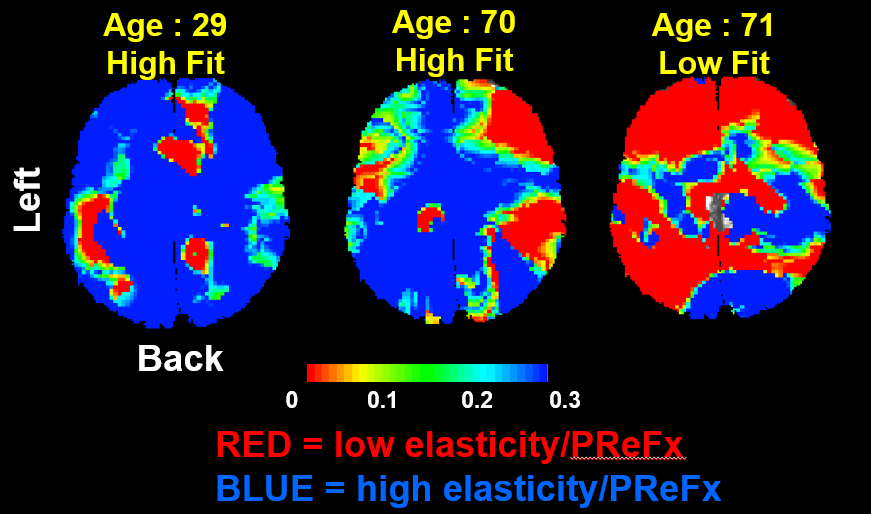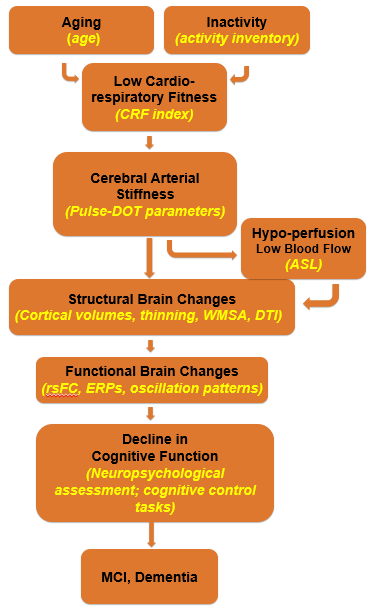Participate
WHAT WE DO
We study a wide range of questions in cognitive neuroscience including perception, attention, memory and motivation. Our research is conducted on both normal young adults, older adults, and clinical populations. This wide range of techniques allow us to explore issues ranging from cognitive aging to functional connectivity.
A central focus of the research conducted in our lab is the integration of different neuroimaging methods including fast optical (EROS), optical spectroscopy (NIRS), functional MRI (fMRI) and event-related potentials (ERPs). By combining different methods, we get a more complete picture of the physiological events that occur in the brain during information processing. Optical methods, which record both neuronal signals (EROS) and slower signals related to hemodynamic activity (NIRS), play a pivotal role in this endeavor. This wide range of techniques allow us to explore issues ranging from cognitive aging to functional connectivity.
OUR ONGOING STUDIES
Optical measures of cerebral arterial function as predictors of brain and cognitive aging
 Inactivity and low cardiorespiratory fitness are among the most important risk factors for cerebral arteriosclerosis (age-related stiffening of the brain’s arteries), a condition that has long been associated
with steep cognitive decline in older individuals, ultimately leading to dementia. In this research, based on young-old individuals (50-70 years of age) not yet affected by MCI (mild cognitive impairment) or dementia, we investigate the early stages
of cerebral arteriosclerosis via the use of novel measures of cerebral arterial elasticity (pulse-DOT, an optical measure of the cerebral arterial pulse).
Inactivity and low cardiorespiratory fitness are among the most important risk factors for cerebral arteriosclerosis (age-related stiffening of the brain’s arteries), a condition that has long been associated
with steep cognitive decline in older individuals, ultimately leading to dementia. In this research, based on young-old individuals (50-70 years of age) not yet affected by MCI (mild cognitive impairment) or dementia, we investigate the early stages
of cerebral arteriosclerosis via the use of novel measures of cerebral arterial elasticity (pulse-DOT, an optical measure of the cerebral arterial pulse).
Role of arterial stiffness in the decline of cognitive control in aging
 Declines
in cognitive control (executive function) are among the most important problems that characterize cognitive aging and dementias, such as Alzheimer’s disease. In this research, we hypothesize that this decline is, at least in part, attributable
to a decline in arterial elasticity (i.e., arteriosclerosis), through a chain-of-events in which structural changes in gray and white matter and changes in brain function (both in the functional organization of the brain, as well as in phasic and
oscillatory brain activities) play important mediating roles.
Declines
in cognitive control (executive function) are among the most important problems that characterize cognitive aging and dementias, such as Alzheimer’s disease. In this research, we hypothesize that this decline is, at least in part, attributable
to a decline in arterial elasticity (i.e., arteriosclerosis), through a chain-of-events in which structural changes in gray and white matter and changes in brain function (both in the functional organization of the brain, as well as in phasic and
oscillatory brain activities) play important mediating roles.
If you are 25-75 years of age and interested in being a research participant, please click here to learn more about this study.
Cognitive Neuroimaging Lab